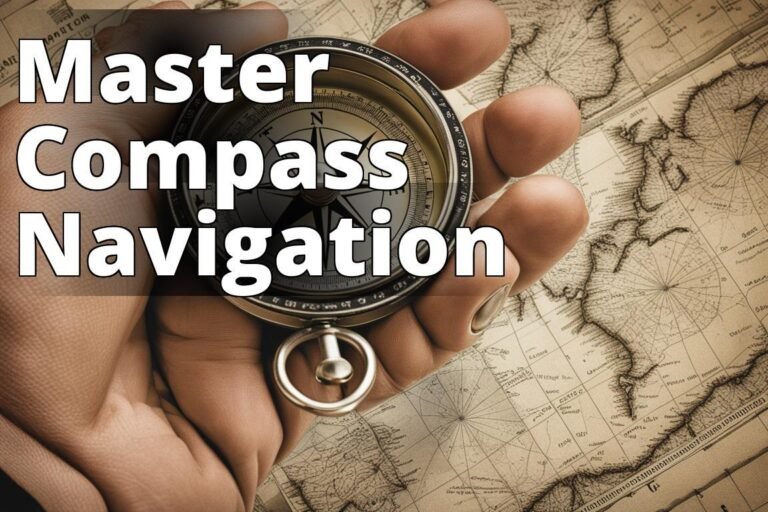How to Use the Stars to Find Your Way

Navigating using the stars is like learning to cook with fire instead of a microwave; it’s an art form that requires patience, practice, and a pinch of audacity. The sky, a colossal canvas painted with constellations, has guided humanity’s wayward steps for millennia. Before GPS and smartphones, our ancestors relied on these celestial bodies for navigation. If they could do it without so much as a battery-operated flashlight, surely, we can learn to find our way back to camp after wandering off to answer nature’s call in the dark. Let’s embark on this journey of rekindling our primal instincts, but with a modern twist of sarcasm and wit.
Learn to Navigate by the Stars
- Find direction using the North Star.
- Identify constellations like the Big Dipper and Southern Cross.
- Use the Moon, Sun, and planets for navigation.
The North Star

Ah, Polaris, the North Star the celestial equivalent of that one overly reliable friend who always remembers your birthday. Finding Polaris is your first step to not sleeping under a random tree for the night. Heres a step-by-step guide, simplified for those who can’t tell a star from a satellite:
- Locate the Big Dipper. It’s like finding the Big Spoon in your kitchen; impossible to miss.
- Follow the “pointer” stars on the edge of the Big Dipper’s bowl opposite the handle. These stars create an imaginary line that points directly to Polaris.
- Congratulations, youve found the North Star! Now, orient yourself knowing that direction is north.
Insider Tip: If youre in the Southern Hemisphere and trying to find Polaris, good luck. Youre looking for a star that wont show up to your party.
For those who prefer tangible guides, consider purchasing a star chart to help identify constellations and stars.
The Big Dipper

The Big Dipper isn’t just a constellation; it’s a celestial Swiss Army knife for the star navigator. Aside from pointing to Polaris, it serves as a nocturnal landmark. Here’s how to use it without getting lost in astronomical jargon:
- Identify the Big Dipper. Hint: it looks like a ladle, or a kite with a really long tail.
- Use it to find not just Polaris but other constellations like Cassiopeia, which forms a “W” and is on the opposite side of Polaris.
- Remember, the Big Dipper rotates around Polaris, so its position changes with the seasons. It’s the sky’s way of keeping you on your toes.
Stoic Quote: “He who does not know the constellations will find himself lost in every sky.” Probably some ancient navigator
The Southern Cross

For our friends in the Southern Hemisphere, the Southern Cross is your guiding light. It’s like Polaris but with an extra dose of Southern charm. Here’s how to navigate by this constellation:
- Find the Southern Cross it’s a compact, kite-shaped constellation that’s pretty hard to miss.
- Draw an imaginary line through the long axis of the cross extending into the sky.
- The point where this line hits the sky is the South Celestial Pole. It’s not marked by a bright star like the North Pole, but it’s a reliable way to find south.
Remember, the Southern Cross also rotates around the South Pole, so its orientation changes with time. Its the skys way of saying, Dont get too comfortable.
The Milky Way

The Milky Way: It’s not just a candy bar, but a galactic highway that stretches across the night sky. Navigating by the Milky Way is like using an interstate; it can guide you in a general direction if you know where to look:
- In the Northern Hemisphere, the Milky Way’s brightest part runs from the southeast to the northwest. In the Southern Hemisphere, it runs from the northeast to the southwest.
- Locate the densest part of the Milky Way for guidance on east-west orientation.
- Remember, the Milky Way can be obscured by light pollution, so this method works best in remote areas where the stars shine the brightest.
Insider Tip: If youre trying to navigate by the Milky Way in a city, you might as well be using a blindfold and a dartboard.
The Moon

The Moon, Earths loyal companion, can also assist in navigation. Its phases can help you determine the east-west axis:
- At sunset, the side of the moon that is lit points west. At sunrise, it points east.
- If you can catch the moon at its first or last quarter, the line dividing the moon’s light and dark sides (the terminator) points toward the north or south pole, respectively.
Remember, the moon travels across the sky, so use it in conjunction with other methods for the best results.
The Sun

The Sun, our solar system’s very own celebrity, is not just for tans and solar power. It’s also a reliable navigation tool. Heres how to use it without ending up walking in circles:
- The sun rises in the east and sets in the west groundbreaking, I know.
- At noon, when the sun is at its highest point in the sky, its directly south in the Northern Hemisphere and north in the Southern Hemisphere.
Stoic Quote: “To find your way, you must be able to read the sky as well as the land.” Sun Tzu, if he was a survivalist
The Planets

Planets, those other wanderers of the night sky, move across the celestial sphere along a path called the ecliptic. While their positions change, they can still help in navigation if you know what you’re looking for:
- Jupiter and Venus are among the brightest objects in the night sky and can be mistaken for stars. Their position can help you identify the ecliptic plane.
- Knowing the ecliptic’s orientation helps with east-west directions since it spans across the sky in this alignment.
However, relying solely on planets for navigation is akin to asking a cat for directions interesting, but not particularly reliable.
Conclusion
Navigating using the stars is not just a skill; it’s a bridge to our ancestral past, a testament to human ingenuity and adaptability. While our modern world has made such techniques seemingly obsolete, there’s a primal satisfaction in knowing you can find your way under the vast, starlit sky. Whether it’s using Polaris, the Southern Cross, or even the Milky Way, the stars offer a celestial compass that’s available to all who take the time to learn its secrets.
Remember, the key to successful star navigation is practice, patience, and a healthy respect for the natural world. In an age where digital disconnection is a rare commodity, looking up might just be the way to find our way not just through the wilderness, but through life itself.
Insider Tip: Always carry a physical compass or a GPS as a backup. The stars are reliable, but even they can’t account for every variable in the wild.
So, the next time you find yourself lost in the great outdoors, or if you’re simply seeking a connection with the ancient ways of our forebears, look up. The sky has been waiting to guide you home.
Useful Links for Further Reading:
- How to Navigate with a Compass
- Outdoor Navigation Techniques
- Surviving Lost in the Wilderness
- Top Hiking Apps to Track Your Progress
- Hiking with Your Dog
- Exploring the Outdoors with Your Cat
- Trails to Explore
- Outdoor Survival Tricks
- Epic Hikes to Challenge Your Inner Explorer
Common Questions
Who can benefit from learning how to navigate using the stars?
Outdoor enthusiasts, hikers, campers, and survivalists can benefit.
What is the importance of knowing how to navigate using the stars?
It is crucial for survival when traditional navigation tools are unavailable.
How can one learn to navigate using the stars?
By studying constellations, star patterns, and using tools like a star compass.
What if I live in an area with high light pollution?
Practice in areas with less light pollution or use online resources.
How accurate is star navigation compared to GPS?
While not as precise as GPS, star navigation is a valuable skill in emergencies.
What if I find star navigation too challenging?
Start with easier constellations and gradually progress to more complex ones.









